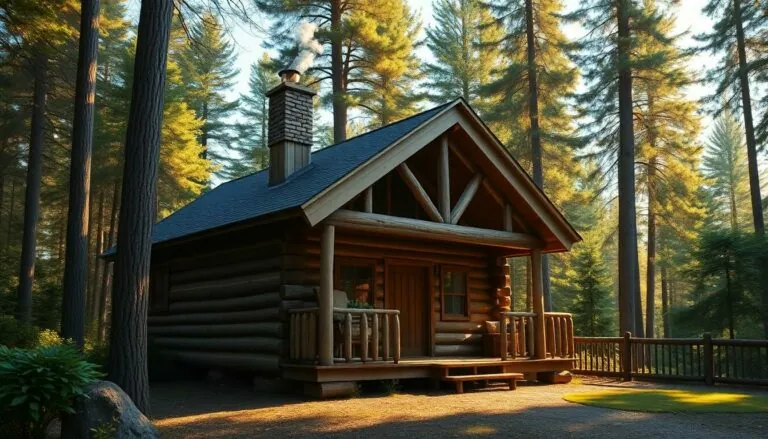Step into a time machine and travel back to the 1940s, where home interiors were a delightful mix of practicality and charm. This decade, shaped by post-war optimism and a splash of creativity, transformed living spaces into cozy havens that reflected both style and function. Picture vibrant colors, bold patterns, and furniture that could double as conversation starters—if only those armchairs could talk!
From the iconic cheery kitchens to the sophisticated living rooms, the 1940s offered a design aesthetic that still captures hearts today. It was an era when people made the most of what they had, resulting in innovative designs that are both nostalgic and inspiring. So grab a cup of coffee and let’s dive into the world of 1940s home interiors, where every corner tells a story and every detail is a nod to a simpler, yet stylish, time.
Table of Contents
ToggleOverview of 1940s Home Interiors
1940s home interiors reflect a unique blend of functionality and style. This era emerged after World War II, bringing forth optimism and creativity. Homeowners embraced a sense of comfort, evident in the cozy layouts and inviting colors found in many living spaces.
Vibrant hues and bold patterns dominated the design landscape. Kitchens, often seen as the heart of the home, featured cheerful colors like sunny yellows and soft greens. Dining areas typically incorporated modern furnishings alongside traditional elements, creating an eclectic yet harmonious atmosphere.
Living rooms showcased stylish details, from patterned upholstery to elegant light fixtures. Many spaces included streamlined furniture, emphasizing both practicality and aesthetic appeal. It wasn’t uncommon to see multi-functional pieces, such as sofa beds, catering to both guests and daily use.
Textiles played a key role in home decor during this decade. Fabrics with geometric designs and floral prints added character to spaces, while vibrant curtains framed windows beautifully. Homeowners prioritized comfort, opting for cushy sofas and armchairs that invited relaxation.
Aside from aesthetics, interiors in the 1940s also demonstrated a growing interest in technological advancements. Appliances gained a more modern look, integrating seamlessly into the design. The introduction of new materials, such as vinyl, made it easier to maintain cleanliness in busy households.
Ultimately, the design choices of the 1940s set the stage for future trends, blending innovative ideas with traditional comforts. The influences from this decade continue to inspire modern interior design, showcasing a timeless appeal that resonates today.
Key Features of 1940s Home Interiors
1940s home interiors combined vibrant aesthetics with practical functionality, reflecting a post-war optimism. These distinct features shaped cozy and stylish living spaces.
Color Palettes
Color choices embraced a warm and inviting atmosphere. Bold yellows and soft greens brightened kitchens, while living rooms displayed deeper colors like teal and burgundy. Warm pastels often contrasted with more muted tones creating visual interest. Accent colors highlighted furnishings and textiles, offering a touch of personality. Homeowners commonly selected cheerful hues that resonated with comfort and elegance. Through this approach, the color palettes of the 1940s contributed to creating spaces that were lively yet comforting.
Materials and Textures
Materials in the 1940s emphasized both durability and style. Wood remained a popular choice for furniture, showcasing rich grain patterns and glossy finishes. Fabrics featured floral prints and geometric designs, bringing character and warmth. Textured elements like shag rugs and plush cushions added depth to spaces, enhancing the cozy feel. Vinyl emerged as a practical material for upholstery due to its easy maintenance and vibrant colors. These carefully selected materials and textures defined the 1940s interiors, reinforcing a balance between function and aesthetic appeal.
Furniture Styles in the 1940s
Furniture from the 1940s showcases a blend of practicality and aesthetics. The era highlights functional designs that complement cozy living spaces.
Popular Designs
Mid-century modern and traditional styles dominated the furniture scene. Clean lines and minimalist shapes marked mid-century modern pieces, often featuring tapered legs and organic forms. Traditional designs included more ornate features such as carved wood details and classic silhouettes. Upholstered furniture used vibrant colors and bold patterns to create a lively ambiance. Bright hues like cherry red and sunny yellow uplifted rooms, while earthy tones provided warmth and comfort. Homeowners embraced eclectic combinations, mixing modern and traditional elements to reflect personal styles.
Iconic Pieces
Iconic furniture pieces from the 1940s defined the decade’s aesthetic. The Eames Lounge Chair introduced comfort with its ergonomic design, combining style and functionality. Contemporary sofas held unique shapes, often embodying vivid upholstery. Dining sets featured sturdy wooden tables paired with upholstered chairs, promoting family gatherings. Coffee tables showcased glass tops with sculptural bases, becoming focal points in living rooms. Collectible sideboards offered ample storage while enhancing decor with rich finishes. These pieces laid the foundation for modern furnishings, making their mark on interior design history.
Decor and Accessories
The 1940s embraced decor and accessories that added character and warmth to home interiors.
Wall Art and Decor
Wall art in the 1940s showcased vibrant prints and bold graphics. Artists like Charles Schulz gained popularity, inspiring the use of playful themes. Framed landscapes and botanical prints often adorned living room walls, creating inviting atmospheres. Gallery walls emerged as a way to display family photographs alongside art, reflecting personal stories. Accessories included decorative mirrors, which expanded light and created visual interest. Additionally, handcrafted pieces like pottery and ceramics provided unique touches, enhancing each room’s individuality.
Fabrics and Textiles
Fabrics and textiles from the 1940s featured lively patterns and rich textures. Floral motifs gained prominence in curtains, upholstery, and cushions, adding cheerfulness to spaces. Geometric designs also captured attention, particularly in area rugs and tablecloths. Cotton and linen dominated fabric choices, celebrated for their durability and ease of care. Cushions and throws not only offered comfort but also served as vibrant accents. Bold colors combined with classic styles made every arrangement feel cohesive and lively, showcasing the era’s dynamic essence.
The 1940s marked a significant period in home interiors where creativity and practicality thrived. This era laid the groundwork for future design trends while celebrating comfort and style. The vibrant colors and innovative materials used in furniture and decor not only transformed living spaces but also fostered a sense of warmth and joy.
As modern homeowners seek inspiration from the past, the charm of 1940s interiors continues to resonate. By embracing elements from this decade, they can create inviting spaces that reflect both nostalgia and contemporary flair. The legacy of the 1940s lives on, reminding us of the beauty found in blending tradition with innovation.



